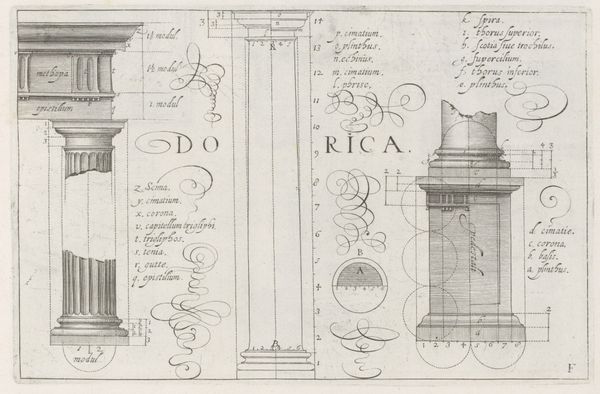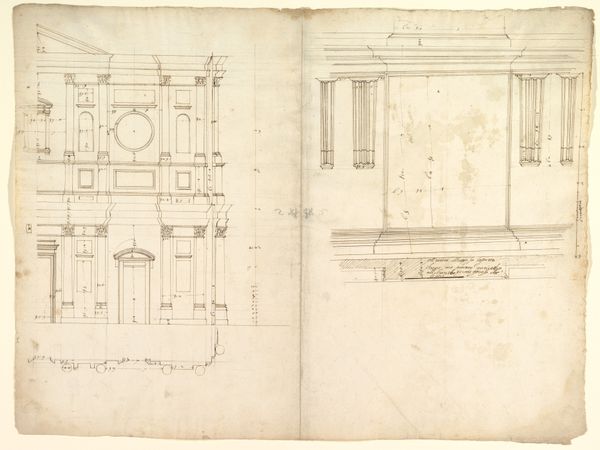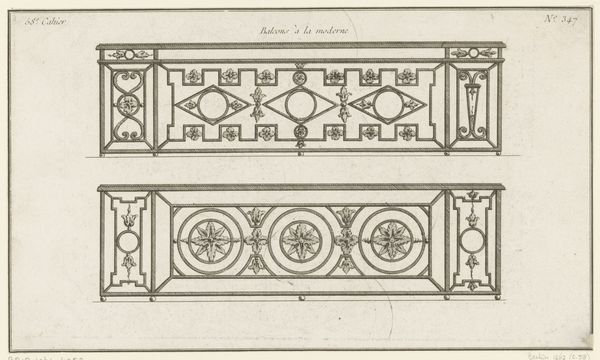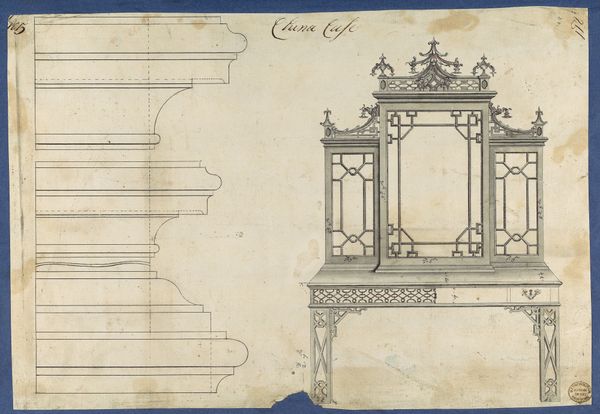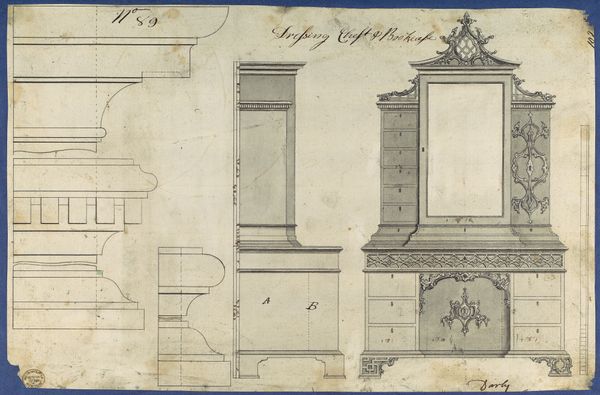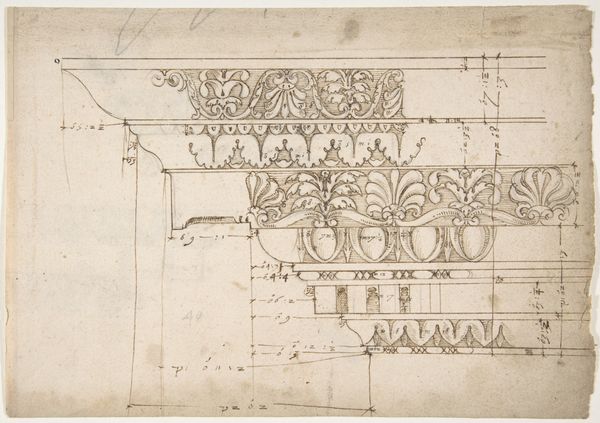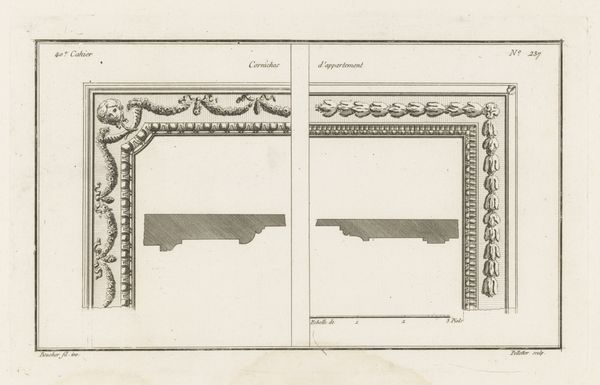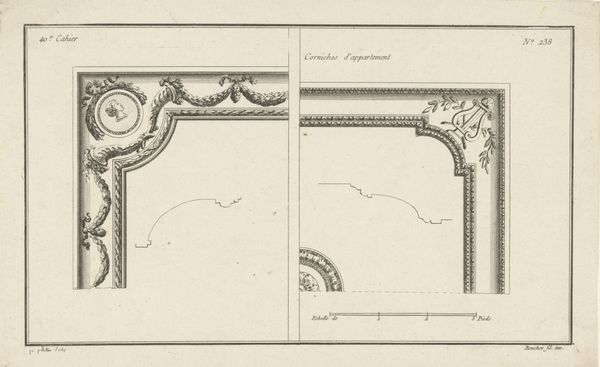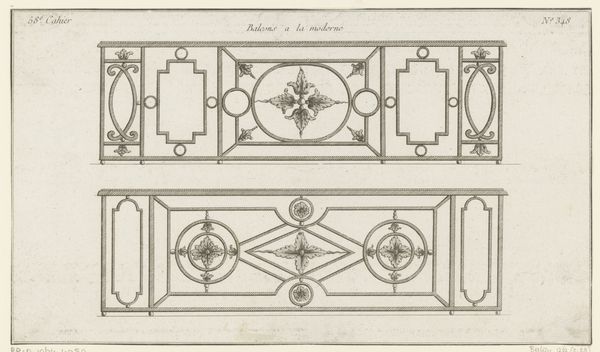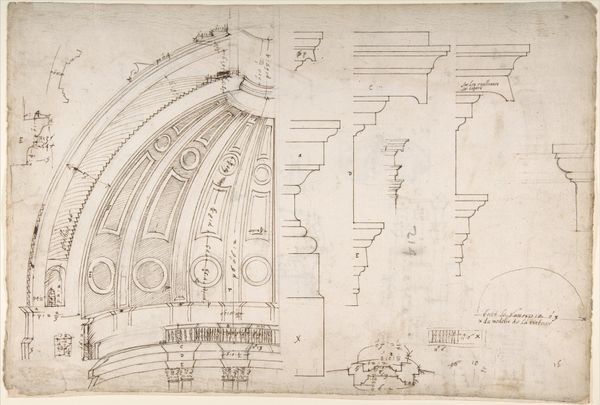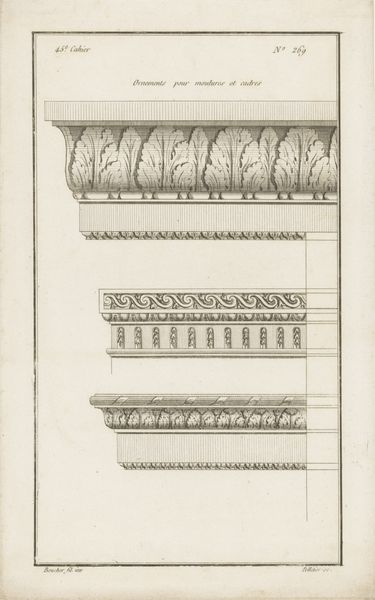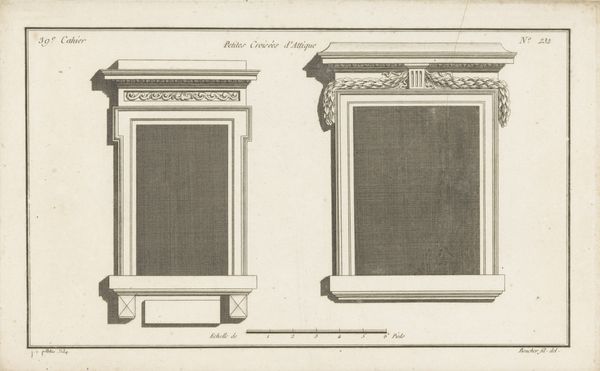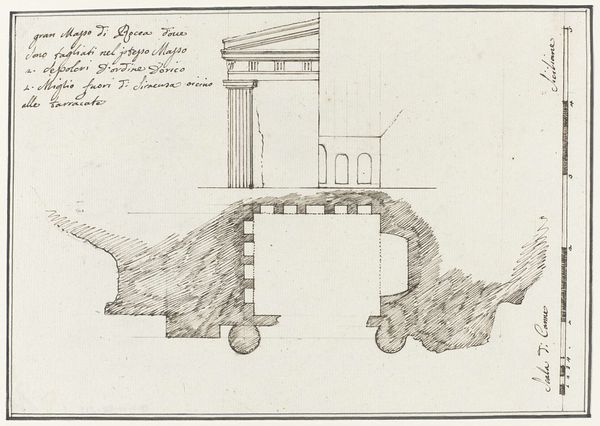
drawing, print, engraving, architecture
#
drawing
#
aged paper
#
toned paper
#
hand written
#
homemade paper
# print
#
old engraving style
#
sketch book
#
hand drawn type
#
classical-realism
#
11_renaissance
#
hand-written
#
fading type
#
geometric
#
stylized text
#
engraving
#
architecture
Dimensions: height 186 mm, width 282 mm
Copyright: Rijks Museum: Open Domain
Curator: Hendrick Hondius I created this engraving, "Ionic Column, Capital and Bases," sometime between 1606 and 1620. It now resides at the Rijksmuseum. Editor: It strikes me immediately as an instructional plate, like something from a manual. The precision is quite stark, yet the aged paper lends it a delicate air. Curator: Absolutely. This work reflects the Renaissance's deep fascination with classical orders. Hondius meticulously depicts the Ionic column, focusing on its proportional systems and distinct components. We see notations everywhere. Editor: Those notations are precisely what grab my attention. Words like "Corona" and "Cymatium" become more than mere labels. They become keys, unlocking the symbolic weight each section carries. The Ionic order, with its volutes, speaks of elegance and intellect. Curator: From my perspective, these meticulously rendered components speak volumes about the labor invested in creating classical architecture. Each line in this engraving mirrors the craftsman's own careful chisel work. This plate allows us to consider the broader material and production culture within the building trades of the era. Editor: I see that, but consider the spirals near the "IONICA" inscription. They almost appear to dance, animating the rigid structure of the column. This is not simply about instruction; it’s about conveying an aesthetic ideal through symbolic form. The very act of engraving it makes the symbols even more relevant. Curator: Interesting point, but let's not forget the role of prints in disseminating architectural knowledge at the time. It put those aesthetic ideals, as you call them, into circulation, making classical design principles accessible to a broader audience of builders and patrons. Editor: True, the mass production shifts how architectural knowledge moves. But the act of drawing, and then the process of engraving – it adds another layer of meaning. It underscores a dedication to idealized form. We see hand-written words and notation, too. Curator: A fair observation. This particular engraving seems to hold layers: one of mass reproducibility and another, tied closely to human labor and artistic expression. Editor: It’s like a blueprint holding a secret language. Curator: I hadn't thought of it that way before! A good example of the intersections we often find at play when analyzing artwork such as this one.
Comments
No comments
Be the first to comment and join the conversation on the ultimate creative platform.
